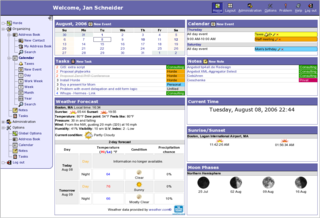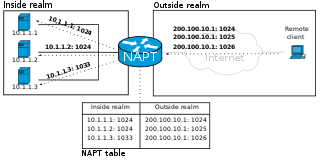External links
| | This standards- or measurement-related article is a stub. You can help Wikipedia by expanding it. |
This group of standards, created by the OPC Foundation, provides COM specifications for communicating data from devices and applications that provide historical data, such as databases. The specifications provides for access to raw, interpolated and aggregate data (data with calculations).
OPC Historical Data Access, also known as OPC HDA, is used to exchange archived process data. This is in contrast to the OPC Data Access (OPC DA) specification that deals with real-time data. OPC technology is based on client / server architecture. Therefore, an OPC client, such as a trending application or spreadsheet, can retrieve data from an OPC compliant data source, such as a historian, using OPC HDA.
Similar to the OPC Data Access specification, OPC Historical Data Access also uses Microsoft's DCOM to transport data. DCOM also provides OPC HDA with full security features such as user authentication and authorization, as well as communication encryption services. OPC HDA Clients and Servers can reside on separate PCs, even if they are separated by a firewall. To do this, system integrators must configure DCOM properly as well as open ports in the firewall. If using the Windows firewall, users only need to open a single port.

SOAP is a messaging protocol specification for exchanging structured information in the implementation of web services in computer networks. It uses XML Information Set for its message format, and relies on application layer protocols, most often Hypertext Transfer Protocol (HTTP), although some legacy systems communicate over Simple Mail Transfer Protocol (SMTP), for message negotiation and transmission.
The Common Object Request Broker Architecture (CORBA) is a standard defined by the Object Management Group (OMG) designed to facilitate the communication of systems that are deployed on diverse platforms. CORBA enables collaboration between systems on different operating systems, programming languages, and computing hardware. CORBA uses an object-oriented model although the systems that use the CORBA do not have to be object-oriented. CORBA is an example of the distributed object paradigm.
Network File System (NFS) is a distributed file system protocol originally developed by Sun Microsystems (Sun) in 1984, allowing a user on a client computer to access files over a computer network much like local storage is accessed. NFS, like many other protocols, builds on the Open Network Computing Remote Procedure Call system. NFS is an open IETF standard defined in a Request for Comments (RFC), allowing anyone to implement the protocol.
The File Transfer Protocol (FTP) is a standard communication protocol used for the transfer of computer files from a server to a client on a computer network. FTP is built on a client–server model architecture using separate control and data connections between the client and the server. FTP users may authenticate themselves with a clear-text sign-in protocol, normally in the form of a username and password, but can connect anonymously if the server is configured to allow it. For secure transmission that protects the username and password, and encrypts the content, FTP is often secured with SSL/TLS (FTPS) or replaced with SSH File Transfer Protocol (SFTP).

In computer networking, a proxy server is a server application that acts as an intermediary between a client requesting a resource and the server providing that resource.
Distributed Component Object Model (DCOM) is a proprietary Microsoft technology for communication between software components on networked computers. DCOM, which originally was called "Network OLE", extends Microsoft's COM, and provides the communication substrate under Microsoft's COM+ application server infrastructure.
Object Linking & Embedding (OLE) is a proprietary technology developed by Microsoft that allows embedding and linking to documents and other objects. For developers, it brought OLE Control Extension (OCX), a way to develop and use custom user interface elements. On a technical level, an OLE object is any object that implements the IOleObject interface, possibly along with a wide range of other interfaces, depending on the object's needs.

Extensible Messaging and Presence Protocol is an open communication protocol designed for instant messaging (IM), presence information, and contact list maintenance. Based on XML, it enables the near-real-time exchange of structured data between two or more network entities. Designed to be extensible, the protocol offers a multitude of applications beyond traditional IM in the broader realm of message-oriented middleware, including signalling for VoIP, video, file transfer, gaming and other uses.

A web application is application software that is accessed using a web browser. Web applications are delivered on the World Wide Web to users with an active network connection.
Windows Management Instrumentation (WMI) consists of a set of extensions to the Windows Driver Model that provides an operating system interface through which instrumented components provide information and notification. WMI is Microsoft's implementation of the Web-Based Enterprise Management (WBEM) and Common Information Model (CIM) standards from the Distributed Management Task Force (DMTF).

In computer networking, port forwarding or port mapping is an application of network address translation (NAT) that redirects a communication request from one address and port number combination to another while the packets are traversing a network gateway, such as a router or firewall. This technique is most commonly used to make services on a host residing on a protected or masqueraded (internal) network available to hosts on the opposite side of the gateway, by remapping the destination IP address and port number of the communication to an internal host.
Open Platform Communications (OPC) is a series of standards and specifications for industrial telecommunication. They are based on Object Linking and Embedding (OLE) for process control. An industrial automation task force developed the original standard in 1996 under the name OLE for Process Control. OPC specifies the communication of real-time plant data between control devices from different manufacturers.
The OPC Foundation is an industry consortium that creates and maintains standards for open connectivity of industrial automation devices and systems, such as industrial control systems and process control generally. The OPC standards specify the communication of industrial process data, alarms and events, historical data and batch process data between sensors, instruments, controllers, software systems, and notification devices.
FTPS is an extension to the commonly used File Transfer Protocol (FTP) that adds support for the Transport Layer Security (TLS) and, formerly, the Secure Sockets Layer cryptographic protocols.
In computer networks, a tunneling protocol is a communication protocol which allows for the movement of data from one network to another. It involves allowing private network communications to be sent across a public network through a process called encapsulation.
The OPC Data Access Specification is the first of a group of specifications known as the OPC Classic Specifications.
OPC Unified Architecture is a cross-platform, open-source, IEC62541 standard for data exchange from sensors to cloud applications developed by the OPC Foundation. Distinguishing characteristics are:
Microsoft UI Automation (UIA) is an application programming interface (API) that allows one to access, identify, and manipulate the user interface (UI) elements of another application.
Component Object Model (COM) is a binary-interface standard for software components introduced by Microsoft in 1993. It is used to enable inter-process communication object creation in a large range of programming languages. COM is the basis for several other Microsoft technologies and frameworks, including OLE, OLE Automation, Browser Helper Object, ActiveX, COM+, DCOM, the Windows shell, DirectX, UMDF and Windows Runtime. The essence of COM is a language-neutral way of implementing objects that can be used in environments different from the one in which they were created, even across machine boundaries. For well-authored components, COM allows reuse of objects with no knowledge of their internal implementation, as it forces component implementers to provide well-defined interfaces that are separated from the implementation. The different allocation semantics of languages are accommodated by making objects responsible for their own creation and destruction through reference-counting. Type conversion casting between different interfaces of an object is achieved through the QueryInterface method. The preferred method of "inheritance" within COM is the creation of sub-objects to which method "calls" are delegated.
Ignition is an Integrated Software Platform for SCADA systems released by Inductive Automation in January 2010. It is based on a SQL Database-centric architecture. Ignition features cross platform web based deployment through Java Web Start technology. The Ignition platform has three main components: the Ignition Gateway, the Designer, and the runtime clients. Independent modules provide separate functionality in any or all of the platform components. Ignition SCADA modules provide features such as: Real-Time Status Control, Alarming, Reporting, Data Acquisition, Scripting, Scheduling, MES, and Mobile support.